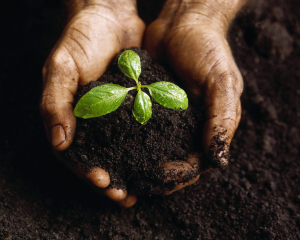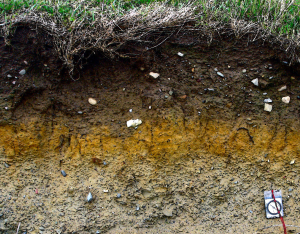It’s the Soil, Stupid
 It’s dark, it’s messy, it’s all around you. It’s soil. It’s the very essence of life. But just what is soil? Why is it so important? And what can you do to improve your own?
It’s dark, it’s messy, it’s all around you. It’s soil. It’s the very essence of life. But just what is soil? Why is it so important? And what can you do to improve your own?
At its most basic, soil is a blend of organic matter, minerals, and living organisms. Rotting leaves, dead animals, crushed rocks, worms, moles, beetles, and bacteria. Most soils have six distinct layers, from decaying matter on top, to rocks and bedrock at the bottom. Soil comprises 25 percent of the Earth’s surface, yet only 10 percent is suitable for food production.
The rise of modern agriculture has presented a number of challenges for soils around the world. In Europe, fertilizer overuse now threatens some 70 percent of natural habitat. In parts of sub-Saharan Africa, the lack of fertilizer has lead to soil degradation and poor yields. Elsewhere, overdevelopment, land mismanagement, and desertification are contributing to widespread soil erosion. Though soil is one of our most crucial resources, its significance is often misunderstood or even outright ignored.
Healthy soil functions as a living system, helping to control plant disease, deter pests, recycle nutrients, improve soil structure, and filter water. The healthier the soil, the healthier the plants and animals that depend on it. A sick soil equals a sick ecosystem. Building an ecosystem that allows plants to thrive with minimal stress is key to healthy soil creation.
To promote healthy soil, first ditch the chemicals. Chemical agents such as pesticides and herbicides destroy essential living organisms and contribute to water and air pollution. They harm beneficial insect species and microorganisms; they also weaken plant root and immune systems. For every chemical-based pest or disease agent, there is an equally effective, non-toxic, organic method.
 Another way to promote soil health is through compost. Compost is organic matter that has been decomposed and recycled. Adding it to gardens or plots improves nutrient-density, helps break up clay soils, and provides for better drainage. For best results, apply each year before planting.
Another way to promote soil health is through compost. Compost is organic matter that has been decomposed and recycled. Adding it to gardens or plots improves nutrient-density, helps break up clay soils, and provides for better drainage. For best results, apply each year before planting.
If your soil is especially depleted, you’ll want to build raised beds. Raised beds increase soil vitality by preventing compacting (you’re not stepping on them) and by facilitating the manipulation of nutrient levels. It’s also a heckuva lot easier on the ole’ back.
Planting cover crops is yet another way of promoting soil health. A robust cover crop eliminates soil erosion, ensuring key nutrients are kept right where they belong.
A well-balanced, nutrient-rich soil is your best defense against pests and disease. Fruits and vegetables grown in sick, overfertilized soil tend to be bland and lifeless. The same fruits and vegetables raised in healthy, biologically-fortified soils are bursting with flavor and nutrition.
It’s really no secret. It’s the soil, stupid.
